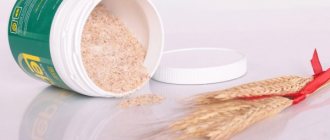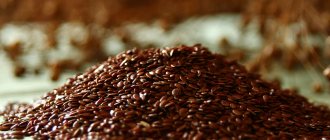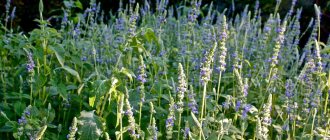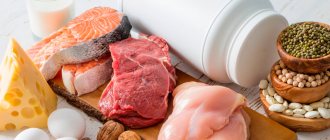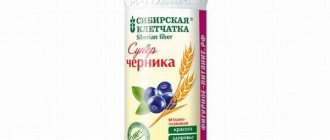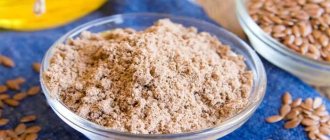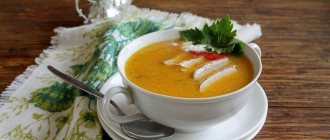How is fiber beneficial for weight loss?
Let us list the main beneficial properties of a product such as fiber:
- Fiber is a kind of brush that cleanses the intestines of toxins;
- Thanks to plant fibers, intestinal microflora is restored , digestion and metabolic processes are improved;
- Fiber has a positive effect on the blood and reduces blood sugar, which prevents fat from being deposited.
- Once in the stomach, it increases in volume, which minimizes the feeling of hunger;
- Plant fibers significantly reduce the risk of developing colon cancer .
From the above it is clear that fiber helps not only in losing weight, but also significantly improves the health of the body.
Benefit
Plant fibers, entering the gastrointestinal tract, perform a number of useful and even irreplaceable functions:
- having the ability to absorb harmful substances, they remove harmful accumulations from the gastrointestinal tract, including waste products, toxins, salts of heavy metals, literally sweeping out from it everything that interferes with the normal functioning of the body;
- normalize the functioning of the excretory system;
- eliminate heartburn, abdominal pain, flatulence, constipation, bloating, due to which a bulging belly disappears and waist size is significantly reduced;
- absorb liquid, swelling and filling the stomach, which ensures a long-lasting feeling of fullness and lack of hunger;
- restore intestinal microflora, activate metabolic processes and digestion;
- limit the growth of glucose after meals, eliminating the craving for constant snacking, significantly reducing the calorie content of the diet, preventing its accumulation in fat depots;
- maintain intestinal health, prevent rectal diseases and the development of cholelithiasis;
- reduce cholesterol and sugar levels, normalize blood pressure.
At the same time, dietary fiber limits the flow of energy into the body, which ensures the breakdown of fat deposits and prevents the emergence of new reserves.
Eating fiber for weight loss, along with a healthy, balanced diet and regular physical activity, significantly speeds up the process of weight normalization, allowing you to maintain the result for a long time.
To effectively get rid of extra pounds, you need to properly dose this product and use it depending on the type.
How to take fiber for weight loss?
Eating excess fiber is not always beneficial, so knowing how to use it in your diet for weight loss is essential.
For maximum effect, fiber is taken as follows. The general rules for any type of fiber are:
- You need to start with a minimal portion in order to observe the body’s reaction to the increased presence of plant elements.
- It is consumed in most cases before or during meals, washed down with plenty of liquid (water, juices, tea).
- In addition to the “dry” intake, you can add fiber to ready-made dishes. On average, 1–2 tsp per serving. In other words, during the active process of losing weight, you need to eat 4–6 teaspoons of plant fiber per day.
- Initially, take half a teaspoon 30 minutes before meals. After 10 days, increase the dose and drink a whole spoon. In this way, you need to increase your fiber intake to 3 tsp. On average, it takes one and a half months to achieve the goal of 3 tsp.
- After 2 months of taking plant fiber, you need to take a 1-3 month break.
- Doctors recommend that when carrying out a complex of fiber intake, you should also “arm yourself” with multivitamins.
Please note that the doses and amount of fiber that you need to eat for weight loss are written on the packaging of each specific herbal supplement, so read and maintain the required proportion.
Tips for getting enough dietary fiber
- For breakfast, it is recommended to eat oatmeal or muesli with yogurt and fresh fruit.
- During lunch and dinner, half of your food should be vegetables.
- Sometimes we snack on fruit, raw vegetables and whole grain bread, preferably along with a protein such as yogurt or cheese.
- Add beans to salads and soups.
- You can add a few slices of avocado to your salad or sandwiches.
- Replace unhealthy carbohydrates such as bread with whole grains such as brown rice, whole wheat pasta, quinoa and whole grain bread.
- You can try a new high fiber recipe.
You can also purchase dry fiber from bran, oatmeal, wheat, Jerusalem artichoke in its pure form or with the addition of pieces of fruit. The choice of such products today is huge, and the fiber in them is usually presented in the form of unrefined grains. Eating this product will be an excellent filling and healthy breakfast or low-calorie snack.
Consuming the right amount of fiber ensures a healthy body from the inside out. Analyze your diet and, if necessary, introduce recommended fiber-rich foods. Be attentive to yourself!
How to choose the right fiber for weight loss?

As for choosing the type of fiber, you need to base it on your needs and the desired result. As noted above, fiber can be of two types, and accordingly its actions differ.
- Soluble swells in water, and after consumption absorbs bile acids, which prevents them from entering the blood. In the stomach, the eaten substance turns into jelly, filling its cavity, which does not allow eating a lot of food.
- Insoluble, it acts as a laxative, causing the intestines to empty quickly. This helps remove cholesterol from the body. By consuming insoluble fiber, you can forget about constipation and also reduce the risk of developing gallstones.
Knowing about the properties of fiber, you can easily choose the one that will help you lose weight.
The best fiber recipes for effective weight loss
Fiber can be called a unique product containing a lot of plant fibers. It promotes weight loss by removing extra pounds. Diets containing fiber are quite effective. It is necessary to accustom the stomach to plant fibers gradually, since nutritionists note negative consequences of a sudden transition to a diet with a high fiber content.
If you use dry fiber powder, then the diet should look like this: The daily intake of products is given, it is divided into 4 doses and with each of them use 2 tsp of fiber powder. You should not sit on such a minimal diet for a long time; starting for up to 5 days on such a diet is quite enough.
If you use fiber in tablets when losing weight, then the diet changes significantly and has the following form: With this diet, fiber tablets are washed down with plenty of water.
If you are a supporter of natural fiber, then you need to create a diet so that 70% of it is occupied by foods rich in fiber. You will find a table for creating a diet below.
Contraindications for use
Eating fiber for weight loss is prohibited if you have certain health problems:
- stomach ulcers, gastritis;
- colitis, chronic enteritis, infectious enterocolitis;
- individual intolerance.
Negative consequences can manifest themselves not only by disturbances in the gastrointestinal tract, but also by a decrease in the absorption of calcium, which is especially dangerous for women during the period of bearing or feeding a child. In addition, too low energy value of this product can cause loss of strength and decreased tone.
In any case, before drinking drinks or eating foods with added or high dietary fiber content, you should always consult with a nutritionist or your doctor. After all, some gastrointestinal diseases go unnoticed, and such a change in diet can aggravate them.
If there are no contraindications, you can use a variety of sources to obtain the required amount of fiber, choosing the most appropriate way for you to consume it.
Kefir with fiber for weight loss
The composition copes well with the task of losing weight: kefir + fiber. To prepare the drink, you need to dilute 4 teaspoons of fiber in a liter of kefir. Drink the composition in 4 doses. On the day you want to use the kefir mixture, do not eat anything else; you are allowed to drink clean water. Such fasting days can be carried out twice every 7-10 days with active weight loss.
Losing weight with fiber: results and reviews of those who have lost weight with photos
Here's what women write about fiber for weight loss: And here are photo reports of girls using fiber for weight loss.
Harm from excess consumption
But with excessive consumption of dietary fiber, a number of disorders may develop, caused either by increased intestinal motor function, or, conversely, by fecal retention and activation of fermentation and putrefaction processes:
- flatulence;
- spasmodic pain along the large intestine (lower abdomen);
- bowel disorders such as diarrhea or constipation;
- weight gain (usually temporary);
- development of intestinal obstruction;
- a critical decrease in blood glucose (relevant for patients with diabetes mellitus taking hypoglycemic therapy).
In order to prevent the development of the described adverse reactions, it is recommended to normalize the consumption of dietary fiber and maintain adequate qualitative and quantitative composition of the diet.
Example of a fiber diet for weight loss
The basis of dietary nutrition for weight loss is the intake of plant fibers, and it does not matter whether it is a pharmaceutical option or a food option. An approximate menu for someone losing weight, using fiber as the main element in the fight against extra pounds, should look like this:
- 1 meal (breakfast): 200 g of porridge (milk possible). A glass of juice + 1.5 tbsp fiber.
- Meal 2 (second breakfast): apples and 1 tbsp kefir with 1.5 tbsp fiber.
- 3rd meal (lunch): a piece of bran bread with light soup (pea, mushroom). Juice with 1.5 tsp fiber.
- Meal 4 (afternoon snack): 150 g low-fat cottage cheese and 1.5 tbsp fiber. It can be mixed with cottage cheese or diluted with water and drunk.
- Meal 5 (dinner): boiled egg, vegetable salad with vegetable oil. Tea.
- Meal 6 (before bed): 1 tbsp kefir with 1.5 tbsp fiber.
You should not forget about the drinking regime, since it is the basis for the proper functioning of the body, no matter what diet you choose.
What is more effective: fiber from a pharmacy or in its natural form?
Fiber is the rough part of natural plants, namely the peel and shell of products.
Fiber can either enter the body through simple foods or be taken in the form of special medications sold at pharmacies. Fiber itself is a carbohydrate that is not absorbed by our body.
In other words, the stomach is full and the feeling of satiety is present, but no calories are supplied or absorbed. If we talk about the soluble type of fiber, then thanks to it the bolus of food moves through the intestines to the “exit”.
The main types of plant fiber include:
Wheat fiber for weight loss. It is rich in cellulose and hemicellulose. These elements can be found in bran, green peas, legumes, beets, carrots, bell peppers, and apples. Consuming these products or their concentrate from the pharmacy along with sufficient fluids helps the colon function.
It is pointless to argue about the best type of fiber, since it copes equally well with the task of cleansing the body (detoxification) regardless of the form of release.
Types of dietary fiber
Now we are beginning to understand what dietary fiber is, but we also need to know that they are divided into two main groups.
- Soluble fiber . Soluble fiber is useful for regulating cholesterol levels; in the intestines it turns into a gel, which is good for preventing diarrhea and brings a feeling of fullness. Oats, apples and pears are good sources of soluble fiber.
- Insoluble fiber. Insoluble fiber regulates bowel movements. It is found in the skins of fruits and vegetables, as well as whole grains and nuts.
Many people are aware of the benefits of fiber and try to focus on getting enough fiber, but there are some situations (such as constipation) where the type of fiber consumed makes a big difference.
Fiber for colon cleansing
Most of the health benefits of fiber are aimed at cleansing the digestive system. Without sufficient fiber in the body, intestinal cleansing is ineffective. To prevent constipation, ensure proper peristalsis and maintain healthy intestinal flora, you need to eat about 30-35 g of fiber daily. The average person on Earth today eats about 15–20 g per day, which is not enough to ensure the health of the digestive, cardiovascular and immune systems.
Fiber and Gut Health
Prebiotics support and feed the beneficial bacteria in the gut. That is, they stimulate the development of beneficial bacteria in the colon and, like fiber, pass through the digestive tract undigested. Some, but not all, sources of fiber are considered prebiotics.
Inulin, fructooligosaccharides and galactooligosaccharides are sources of fiber and prebiotics and probiotics.
Raw starch is a prebiotic, degradable fiber, and a type of carbohydrate. It is found in whole grains, green bananas, potatoes and beans and travels to the colon where it is fermented by bacteria. Consuming raw starch is beneficial for regulating blood sugar levels and healthy appetite.
How can fiber be harmful?
An excessive increase in fiber intake can lead to intestinal obstruction and dehydration. To avoid this:
- introduce fiber-rich foods into your diet gradually;
- do not exceed the recommended amount;
- Drink more water, less coffee, tea, carbonated and alcoholic drinks.
Products containing fiber

All plant products contain fiber. There is especially a lot of it in the pulp and peel of vegetables and fruits, grain husks; whole grains and legumes contain huge amounts of dietary fiber. Be sure to enrich your diet with seeds and legumes.
Products | Fiber content, g |
| Cereals | Fiber (g) per cup of product |
| Buckwheat | 17 |
| Bran | 6 |
| Brown rice, oatmeal | 4 |
| Fruits | Fiber (g) per medium fruit |
| Avocado | 8 |
| Papaya | 5 |
| Apple, kiwi, banana | 4 |
| Vegetables | Fiber (g) per serving (200 g) |
| Potato | 10 |
| Spinach | 6 |
| Broccoli, green beans | 5 |
| Mushrooms, kale | 4 |
| Legumes | Fiber (g) per cup of product |
| Lentils | 16 |
| Beans, peas | 14 |
| Nuts | Fiber (g) per serving (30 g) |
| Almond | 5 |
| Pistachios, walnuts | 3-4 |
Table with a list of foods that contain fiber.

Fiber is also sometimes used as an additive to already prepared foods. Soluble fiber beta-glucan, cellulose and pectin are all examples of ingredients that are used to increase the fiber content of foods.

